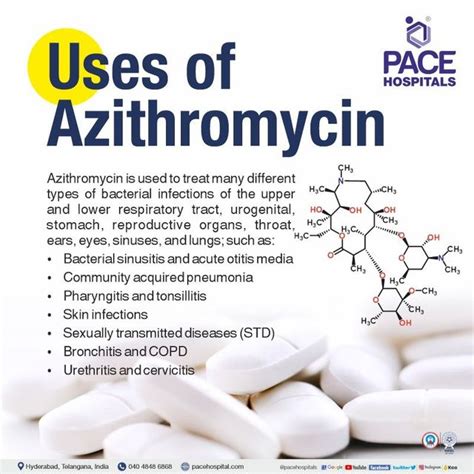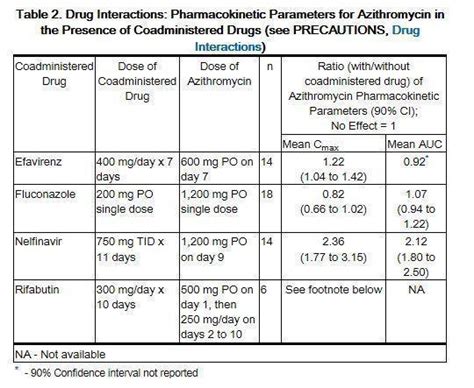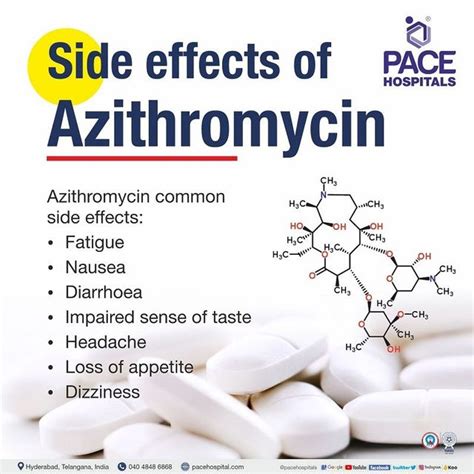Intro
Discover Azithromycin 250 Mg, a broad-spectrum antibiotic for bacterial infections, offering effective treatment for respiratory, skin, and STDs with fewer side effects, convenient dosage, and high efficacy.
The importance of effective antibiotic treatments cannot be overstated, especially in today's world where antibiotic resistance is a growing concern. Among the various antibiotics available, Azithromycin stands out for its broad-spectrum efficacy and patient-friendly dosing regimen. Azithromycin 250 mg is a commonly prescribed dose for various bacterial infections, offering a balance between therapeutic effectiveness and minimal side effects. Understanding how Azithromycin works, its benefits, and its proper use is crucial for both healthcare providers and patients.
Azithromycin belongs to the macrolide class of antibiotics, which work by inhibiting bacterial protein synthesis. This mechanism of action is effective against a wide range of bacteria, including those responsible for respiratory tract infections, skin infections, and sexually transmitted diseases. The 250 mg dose is particularly favored for its ability to achieve high tissue concentrations, ensuring that the infection site receives an adequate amount of the drug to combat the bacteria effectively.
The choice of Azithromycin 250 mg as an antibiotic treatment is influenced by several factors, including the type of infection, the severity of the infection, and the patient's medical history. For instance, in the treatment of community-acquired pneumonia, Azithromycin is often prescribed due to its coverage of common bacterial pathogens and its once-daily dosing convenience. This dosing regimen enhances patient compliance, which is critical for the successful treatment of infections and the prevention of antibiotic resistance.
Azithromycin Mechanism of Action

Benefits of Azithromycin 250 Mg

Common Infections Treated with Azithromycin
Azithromycin 250 mg is commonly used to treat various infections, including: - Acute bacterial sinusitis - Community-acquired pneumonia - Pharyngitis/tonsillitis - Skin and skin structure infections - Urethritis and cervicitisAzithromycin Dosage and Administration

Potential Side Effects and Interactions

Precautions and Warnings
When prescribed Azithromycin 250 mg, patients should be aware of the following precautions and warnings: - Allergic reactions: Patients with a known allergy to Azithromycin or other macrolide antibiotics should not take this medication. - QT interval prolongation: Patients with a history of QT interval prolongation or those taking medications that may prolong the QT interval should be cautious. - Liver and kidney function: Patients with significant liver or kidney disease may require dose adjustments.Azithromycin Resistance and Stewardship

Future Perspectives on Azithromycin Use

Conclusion and Recommendations

We invite readers to share their thoughts and experiences with Azithromycin 250 mg, and to consider the broader implications of antibiotic use and resistance. Your comments and questions can help foster a more informed discussion about the role of antibiotics in modern healthcare. Additionally, if you found this article informative, please consider sharing it with others who may benefit from this information.
What is Azithromycin used for?
+Azithromycin is used to treat various bacterial infections, including respiratory tract infections, skin infections, and sexually transmitted diseases.
How does Azithromycin work?
+Azithromycin works by inhibiting bacterial protein synthesis, which is essential for the growth and replication of bacteria.
What are the common side effects of Azithromycin?
+Common side effects of Azithromycin include gastrointestinal disturbances such as nausea, vomiting, and diarrhea. Less common side effects can include allergic reactions and liver enzyme abnormalities.
